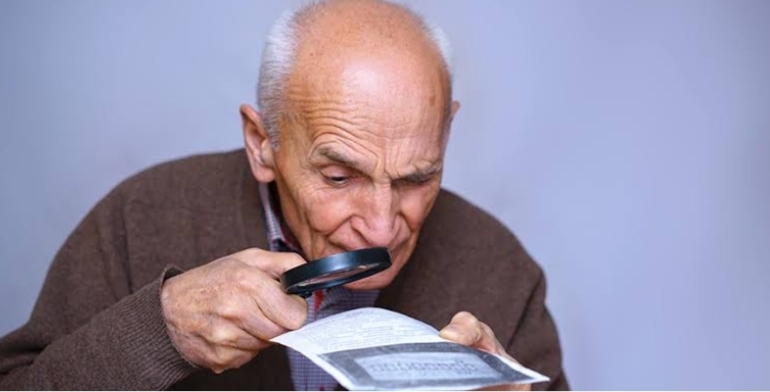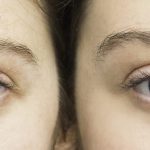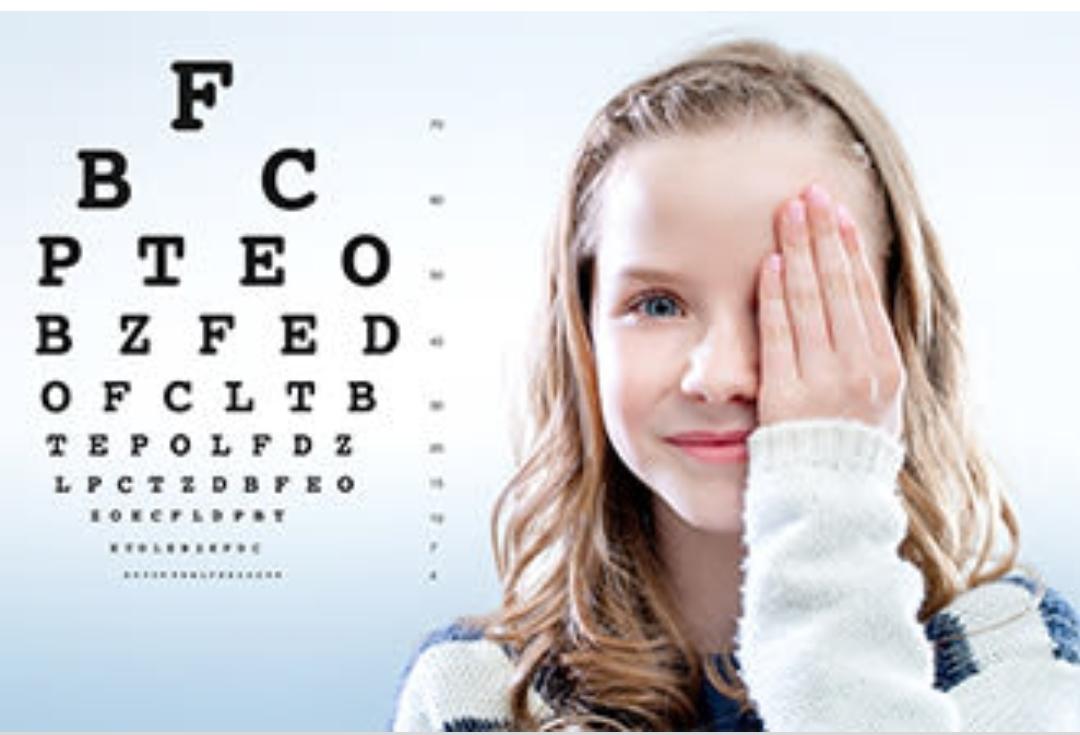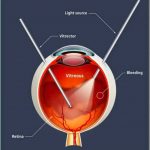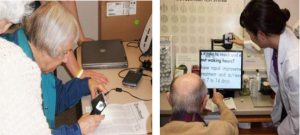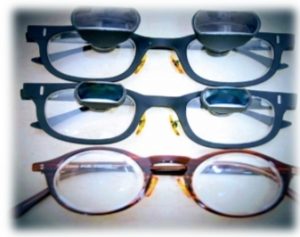Vision loss is a very serious problem that disrupts people’s daily normal activities because their eye sight decrease due to any disease or trauma Vision loss is a very serious problem that disrupts people’s daily normal activities because their eye sight decrease due to any disease or trauma. This vision loss can become more severe if the problem is so complicated that the person can become blind for lifetime .
Some causes of profound vision loss –
I. Cataract
II. Corneal ulcer
III. Macular degeneration ( AMD )
IV. Vitreous hemorrhage
V. Glaucoma
VI. Trauma
Symptoms –
I. Eye pain
II. Headache
III. Inability to see anything
IV. Visual acuity is PL +
V. Corneal damage
VI. Discharge
VII. A white instead of black pupil
Whenever we treat a patient with severe vision loss , we must take the patients past history , so that we can know the cause of his / her blindness .
History taking of patient with profound vision loss –
I. First the doctor will ask the patient to know if there was any accident happened with patient in which his / her eyes were damaged
II. If the patient is suffering from congenital eye disease then he / she will be asked if anyone his or her house is suffering from this problem .
III. If a disease or trauma is known from the patient , it is also important to know how long he has been suffering from the problem and if there is an injury , how long ago was the injury ?
IV. The patient will be asked if he has seen any doctor for his disease and if so then the doctors prescription should be seen so that it is known whether he / she has taken any medicine before .
V. The patient will be asked if he or she has any other disease and if so what medicine he or she is taking ?
VI. Patient will undergo blood pressure check up , sugar test and blood test to know his physical condition is
VII. Taking a patient history provides information about the patients disease , thereby facilitating the treatment of the disease .
After taking all the detailed history of the patient we can start the treatment according to the diagnosis of the patient .
Treatment of those problems that cause profound vision loss
i. Cataract – Cataract is the most common cause of blindness overall worldwide . Cataract means that the lens of the eye will gradually harden and it will turn white , so the patient will not be able to see anything properly . Cataracts has 4 stages ie, grade 1 , grade 2 , grade 3 and grade 4 . At no.4 stage the patients vision is completely blocked and light is perceived. A person with mature cataract can see almost nothing . If someone’s cataract progress to grade 4 , their vision came down to PL .
Management – Their is no specific medicine for this disease . If someone have mature cataract then they must operate the cataract because he/she will not be able to see anything until the operation is done. Surgery is the only way to survive this disease. There are to popular method of cataract surgery , they are – SICS and PHACO . After the surgery there is 90 % chance of vision recovery.
ii. Glaucoma – Glaucoma is the 2nd most common cause of blindness worldwide . Glaucoma is a disease where visual field is loss due to persistent raised of IOP [ Intra Ocular Pressure ] .It can damage our optic nerve . There are 2 types of Glaucoma – i. Open angle glaucoma ii. Angle closure glaucoma
A person with glaucoma has a high risk of increased IOP in the eye . In glaucoma , the visual field of a person’s eye is damaged and subsequently he can’t see nothing .
Signs and symptoms –
i. Eye pain
ii. Raised IOP
iii. Visual field loss
iv. Halos or colored rings around lights.
v. Eye redness
Management – Some improvements is possible with medication and surgery
Medications –
a. Timolol , levabunolol , betaxolol decrease aqueous humor production by the epithelium of the cilliary body.
b. Alpha -2 – adrenergic agonist , such as brimonidine , apraclonidine work by a dual mechanism ,decreasing aqueous humor production and increasing uvoscleral
iii. Miotics agents , such as pilocarpine , work by contraction of the cilliary muscle , opening the trabecular meshwork and allowing increased outflow of the aqueous humor .
Surgery –
a. Trabeculectomy – It is a gold standard that lowers the pressure inside the eye . It is successful about 60 – 80% of the time in controlling the eye pressure.
b. Iridectomy – Iridectomy can be performed on patients diagnosed with closed angle glaucoma . Iridectomy is a surgical procedure of glaucoma to remove a part of the iris .
iii. Corneal ulcer – A corneal ulcer is a defect in the surface epithelium of the cornea that involves the underlying stroma. This can be due to various reasons such as due to reacting medication or trauma to the eye or those who wear regular contact lens , are more likely to develop this disease . This disease can also be caused by any chemical reaction with eyes . This disease can also be caused by contact with some micro organism , they are – Acanthamoeba , Fusarium , Aspergillus , candida . In this disease, a light white coating is seen on the cornea and over time , it becomes large in the absence of treatment. When the stage is reached , people’s eyesight decrease dramatically , their vision came down to PL and sometimes people become completely blind .
Symptoms – symptoms are
I. Whitish cornea
II. Pain and swelling
III. Redness
IV. Photophobia
V. Itching and irritation
VI. Blurry vision
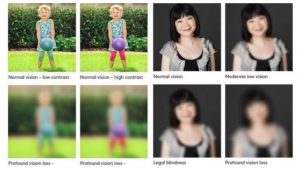
Management – Although medications work in the early stages of corneal ulcer ie, some antibiotics ans antifungal are affective for early stages of ulcer but when the disease becomes severe surgery is the only option . A corneal transplant ( Keratoplasty ) is an operation to remove all the part of a damaged cornea and replace it with healthy donor tissue . A cornea transplant is often referred to as keratoplasty or a corneal graft . It can be used to improve sight , relive Pain and treat severe infection or damage .
iii. Trauma – Due to an eye injury , our eyes can be severely damaged , the stronger the injury , the more the damage . Due to injury or trauma someone can be blind for lifetime . Common cause of eye injury due to domestic or industrial accidents, sporting injuries , motor vehicle crashes . Injuries may be to the eyeball , cornea and other soft tissue or orbit . Severe injuries can damage the nerves inside the eye , resulting in lifelong blindness. Symptoms are –
I. Severe redness
II. Dislocated lens
III. Subconjunctival hemorrhage
IV. Corneal ulcer
V. Disorganized condition of cornea
Types of injuries –
I. Corneal abrasion
II. Ocular trauma
III. Blunt trauma
IV. Chemical trauma
Management – However there is no specific way to cure eye vision if the eye is damaged dur to serious injury . Although some cases can be cured by operation like – keratoplasty , Laser photocoagulation , Cryotherapy
V. Macular degeneration – Macular degeneration, also known as age – related macular degeneration ( AMD ) is a medical condition where in the centre of the visual field mat result blurred or no vision . This disease is not noticed on early stage but gradually it continues to spread amd gradually it becomes fatal . The patient vision becomes progressively worse and eventually becomes blind. This disease usually occurs in older patient . Patient experience a gradual worsening of vision that may affect one or both eyes .
Symptoms –
I. Visual impairment
II. Loss of central vision
III. Burning and sensation
Management –
I. Photodynamic therapy – It’s a two step treatment for wet AMD that uses a light sensitive drug to damage abnormal blood vessels . After that , the doctor will give medicine . Next doctor will shine a laser to active the drug . It creates blood clots to stop abnormal blood vessels from leaking .
II. Laser therapy – It is a most affective surgery with high energy laser light that can seal and sometimes destroy actively growing abnormal blood vessels from wet AMD .

